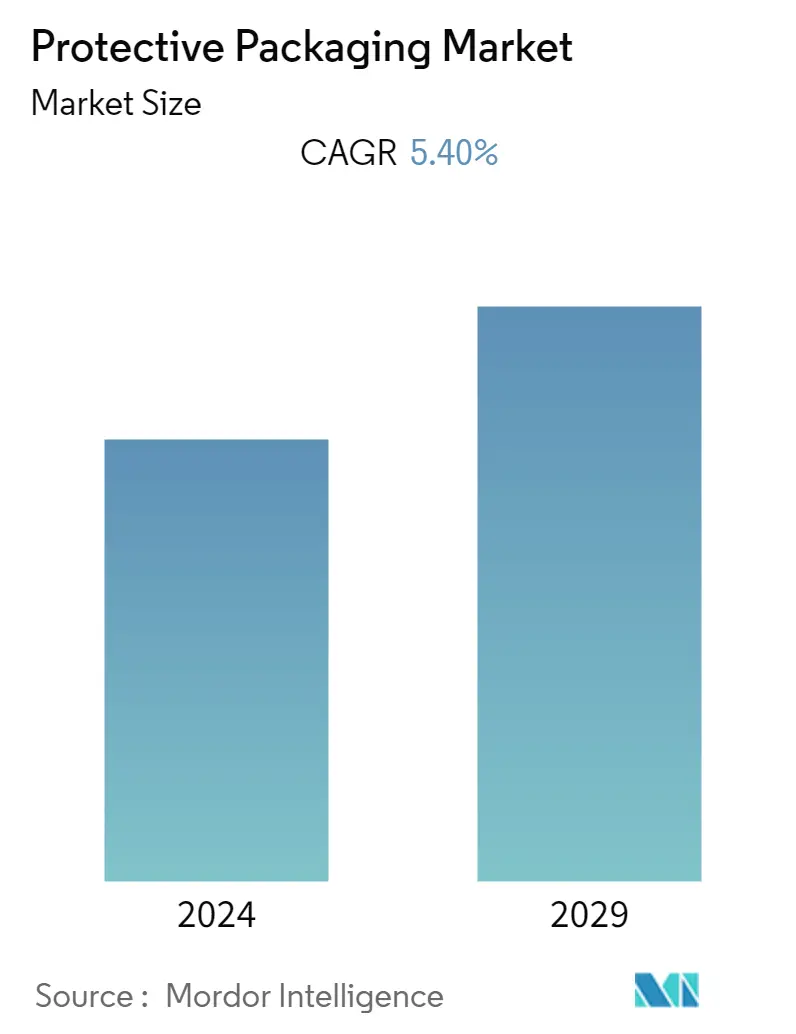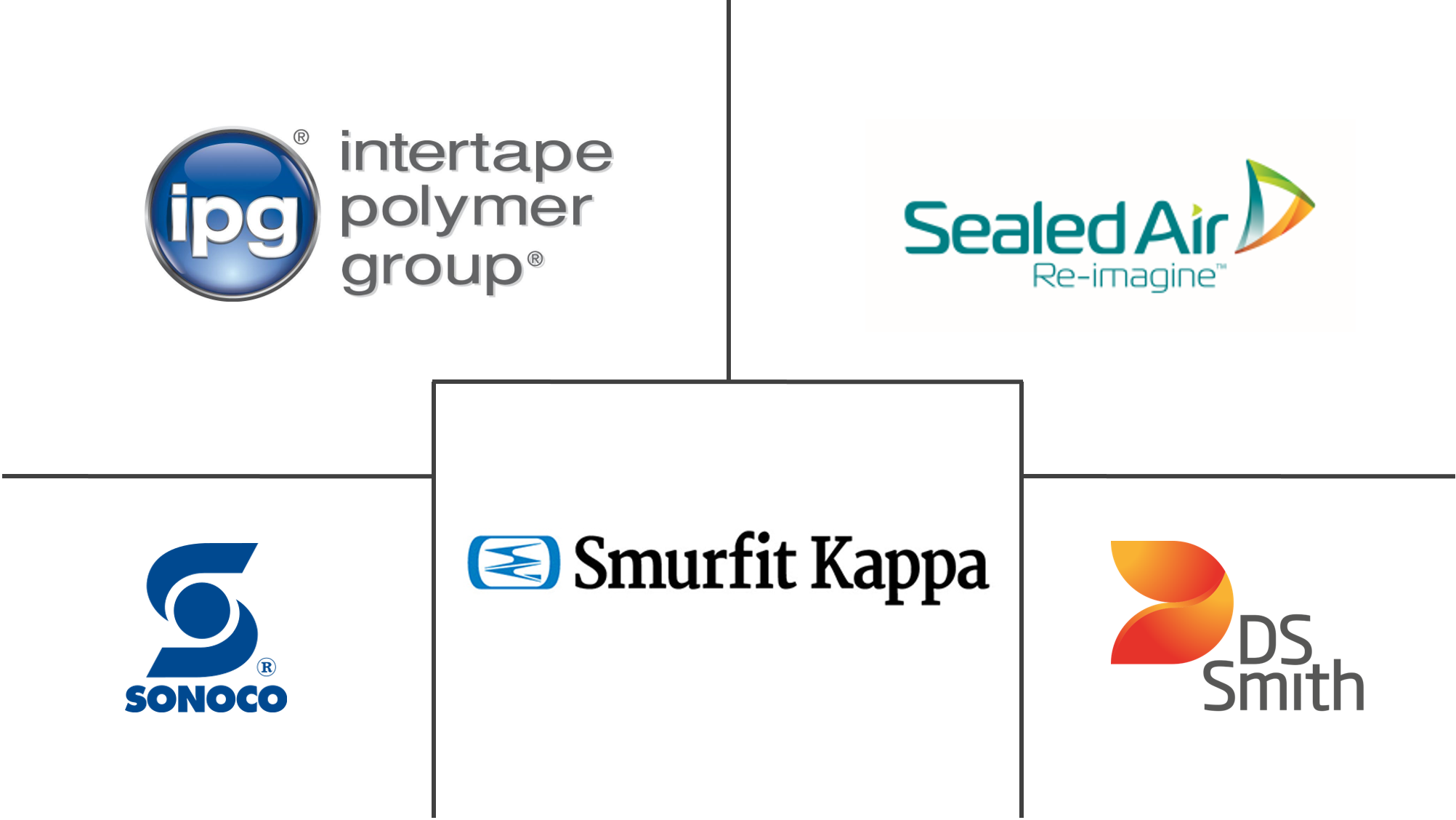Market Size of Protective Packaging Industry

| Study Period | 2019 - 2029 |
| Base Year For Estimation | 2023 |
| CAGR | 5.40 % |
| Fastest Growing Market | Asia Pacific |
| Largest Market | Asia Pacific |
| Market Concentration | Low |
Major Players
*Disclaimer: Major Players sorted in no particular order |
Need a report that reflects how COVID-19 has impacted this market and its growth?
Protective Packaging Market Analysis
The protective packaging market was valued at USD 30.56 million in 2020, and it is expected to reach a value of USD 41.65 million by 2026 at a CAGR of 5.4% during the forecast period of 2021 to 2026. Logistics and material handling technology, with its development and innovation, has played a significant role in the evolution and adoption of new generation packaging products. These protective packaging products have evolved to be smart, and the reduction in the price of sensors, networks, and communicating devices has augmented the market.
- The increasing trend of online purchasing by consumers drives the changes in product design, packaging, picking, fulfillment, and shipping. As a result, product protection is considered one of the most critical issues. The exponential growth of e-commerce, combined with the technological advancements in packaging material options, is primarily changing the way most companies choose the right solution. The main points considered are the performance, cost considerations driven by material improvements, packaging needs, delivery systems that create on-demand packaging, and sustainability
- Several businesses have attempted to streamline and optimize their packaging solutions in the past few years, which resulted in the evolution of protective packaging. The old traditional methods are still considered to be effective and commonly used. However, the recent advancements in materials and equipment have boosted the adoption of protective packaging into the next generation. Moreover, automated packaging solutions are witnessing an increase in the adoption, as they reduce labor and waste while increasing processing speeds for high volume packaging.'
- The market is witnessing constant efforts and increased investment to develop eco-friendly and sustainable packaging materials, which can be recycled and reused. The paper mailers are gaining traction due to their eco-friendly qualities, such as better suitability for recycling. This is one of the significant trends in the developed markets, such as North America, where stringent environmental regulations are in place, and recycling programs are extensively employed.
- Also, the increasing demand for consumer electronics across various regions and increasing smartphone penetration, the need for protective packaging of these products is rising, as the vendors aim to deliver their products to consumers without any damage. The proper selection of protective packaging solutions primarily depends on the type of product that is being packaged, such as consumer electronics and food, as well as the environmental conditions from which the product should be protected. Selection factors may include product type, material, specifications, and other features
- Specific to market demand, the new -age protective packaging materials have led to increased customer retention and sustainability. In the present market scenario, product manufacturers are intensively focusing on creating a positive experience for their end-users. Customer retention for a business is beneficial as a satisfied customer is highly worthy of the company's image and helps gain the trust of prospective and potential customers.
